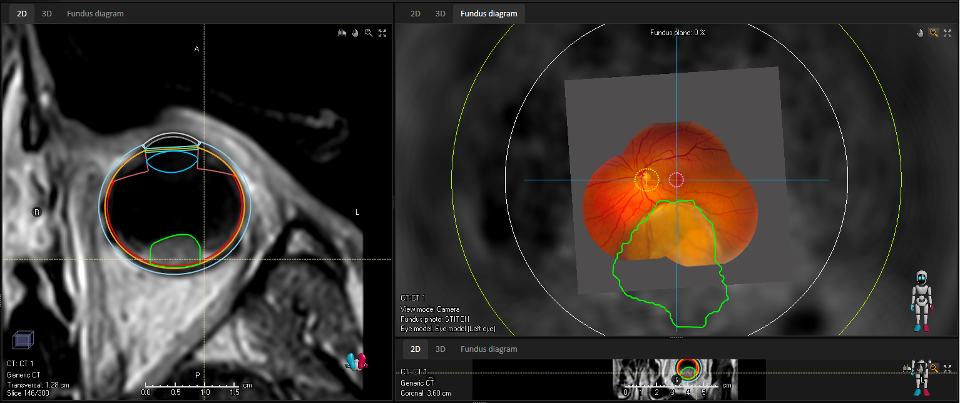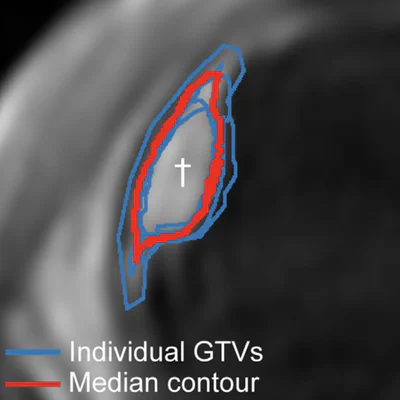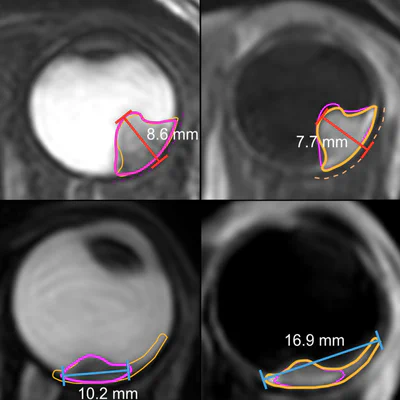Ocular Proton Therapy
Conventionally ocular proton therapy is planned using a mathematical eye and tumour model, based on 2D ultrasound measurements and tantalum clips which are sutured to the eye wall. With our high resolution MR-images of the eye, we are working on an image-based form of planning, enabling a more conformal treatment, thereby sparing more of the patient’s vision. This, however, raises the bar on the accuracy and consistency of our methods, as we have to guarantee the high level of 98% of local control.
Together with our partners at the Holland Proton Therapy Center in Delft, we are furthermore developing the technology for clipless ocular proton therapy, which will significantly lower the burden and costs of this treatment. Through all these developments radiation oncologists will have a much better control over which part of the eyes will be irradiated and which parts will be spared. Together with the patient’s advocacy groups Stichting Melanoom, we are performing studies to assess how this added flexibility can be used to better include the patient’s preferences in the treatment planning.



